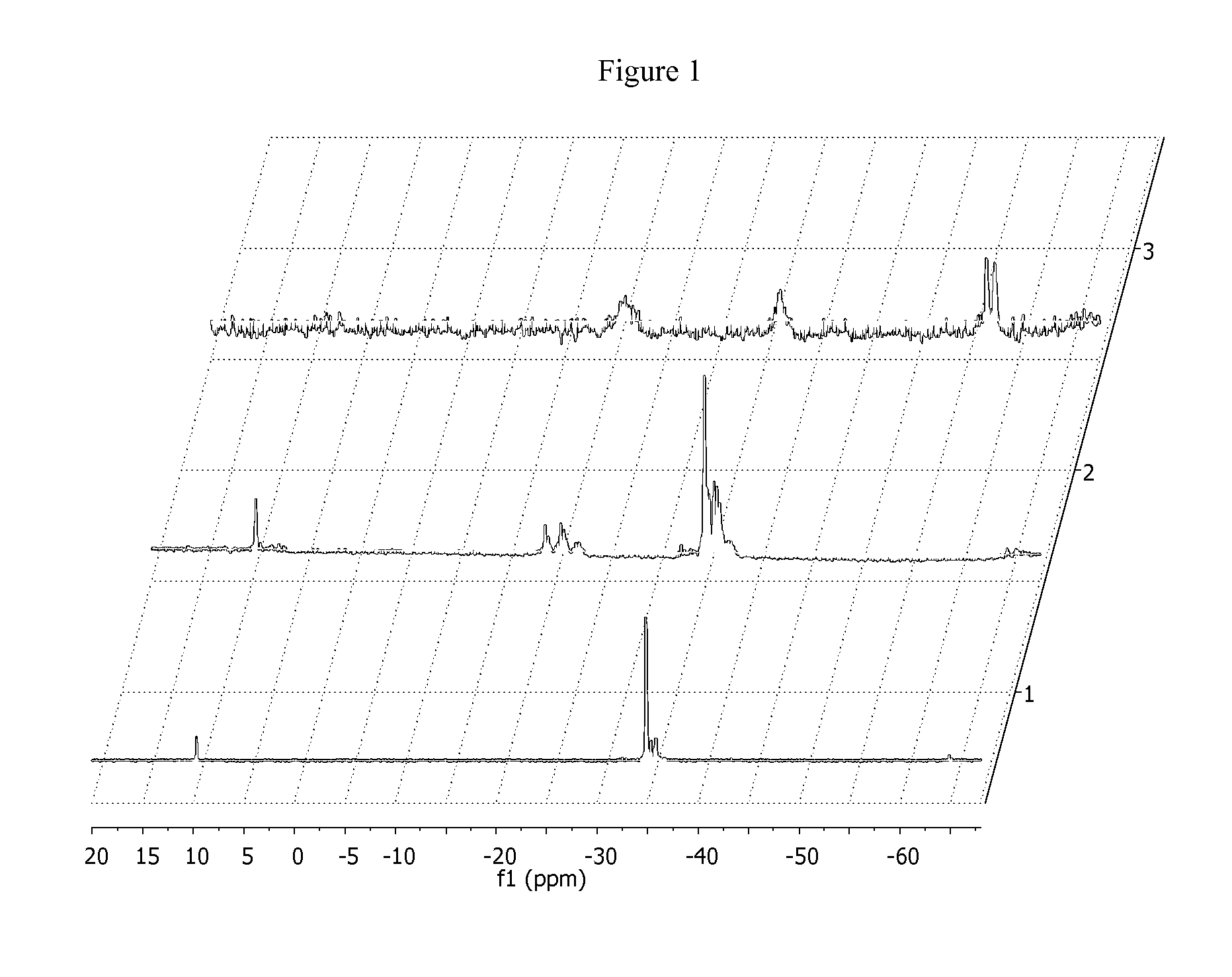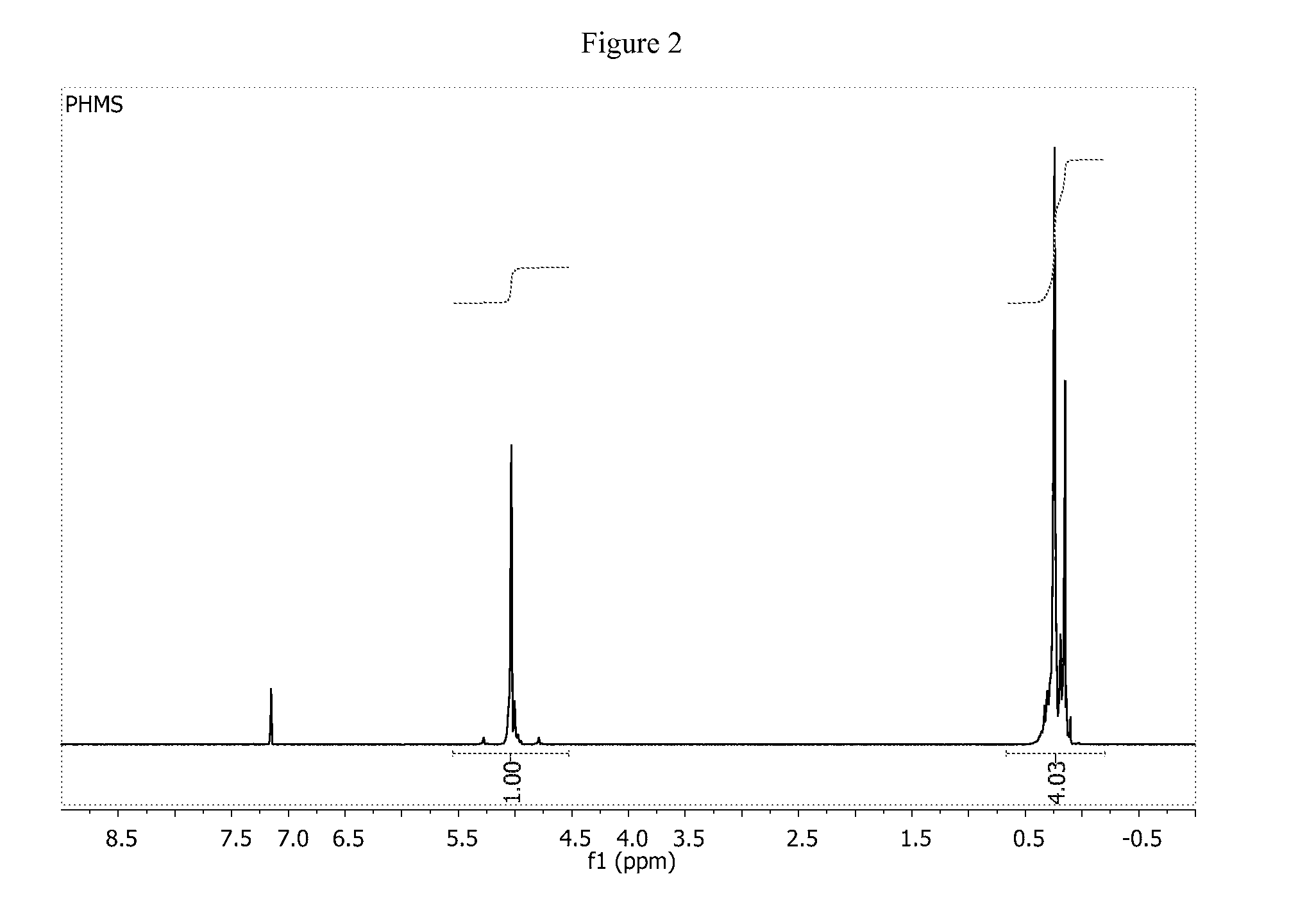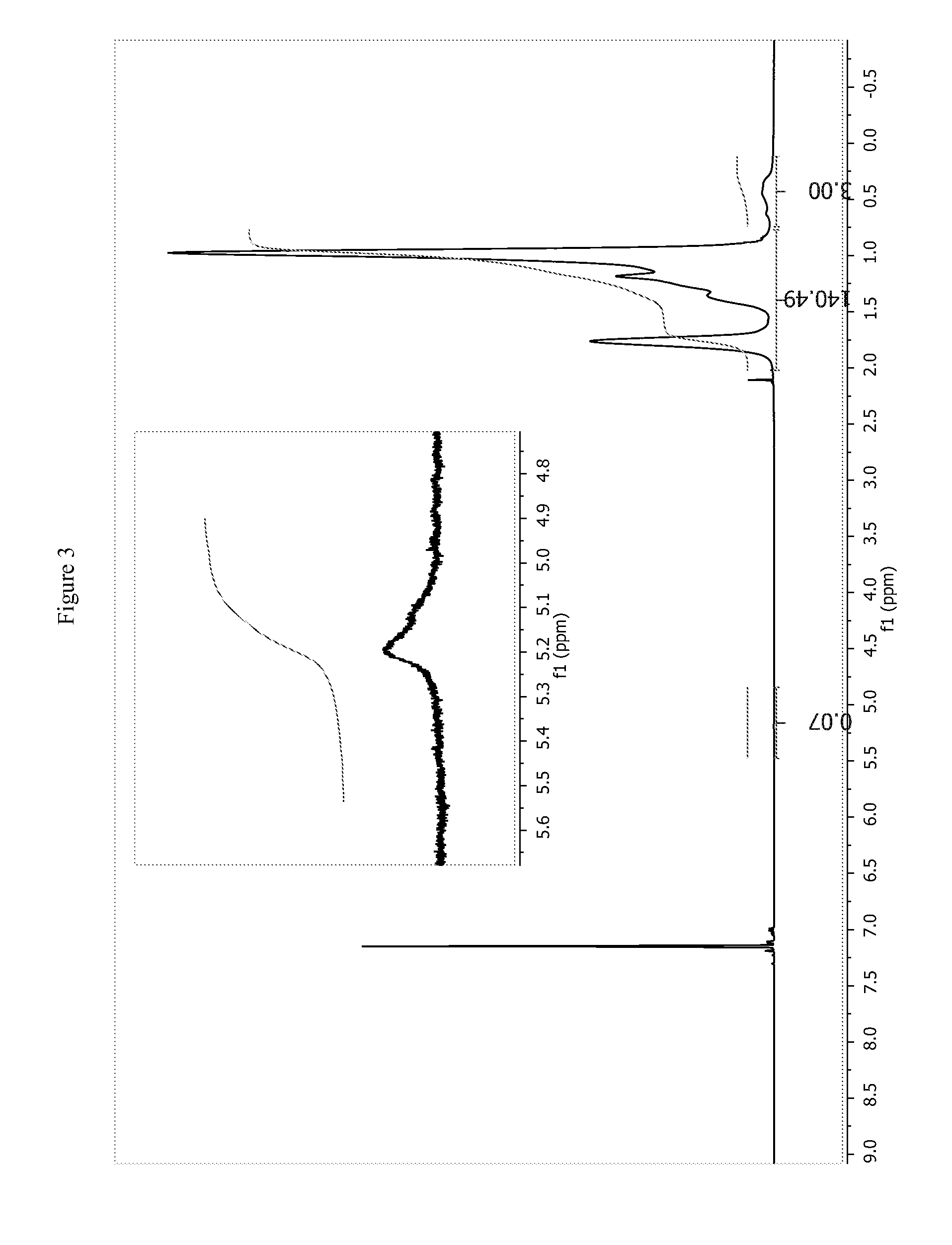Hydrosilation of vinyl-terminated macromonomers
a technology of macromonomers and hydrosilation, which is applied in the field of hydrosilation of vinyl-terminated polyolefins, can solve the problems that none of the above references, however, disclose the functionalization of polyolefins, and achieve the effect of high meo-side chains
- Summary
- Abstract
- Description
- Claims
- Application Information
AI Technical Summary
Problems solved by technology
Method used
Image
Examples
examples 1-16
Standard Hydrosilation Reaction
[0217]Reactions were performed in a vacuum atmospheres drybox with continuous N2 purge. The VTM was dissolved in toluene (generally 60 to 150 mls) and 3A sieves (2-5 g) were added for removal of water. After at least 48 hrs, the mixture was decanted from the sieves, with the aid of additional toluene, into another glass vessel with a teflon stir bar. PMHS was added with vigorous stirring and a t=0 aliquot pulled for reference. The reaction mixture if heated was brought to desired reaction temperature at this point. Karstedt catalyst was added and the reaction stirred for 3 hrs unless stated otherwise. An aliquot was taken before the reaction mixture was transferred from the drybox to the atmosphere into a hood. The reaction was generally reacted with MeOH for 2 hrs or exposed to air for 2 hrs before product work-up. The volatiles were removed and the product dried in a vacuum oven at 100° C. to remove all toluene. The products were generally light to m...
example 17
Reaction of EP-VTM H with Methylhydrocyclosiloxane
[0235]EP-VTM H (9.0 g,) was dissolved in toluene (125 ml) and dried over 3 A sieves for 48 hrs. The reaction mixture was decanted away from the mole sieves and methylhydrocyclosiloxane (100 mg) was added with vigorous stirring under an N2 atmosphere. Kardstedt catalyst (40 mg of 2 wt % solution) was next added to the reaction mixture. An aliquot at 2 hrs indicated that only 25% of the vinyl chain ends had been consumed. The reaction was taken out of the drybox and the reaction was sparged with dry air for 2 hrs. An analysis of an aliquot by 1H NMR indicated all vinyl chain ends had been consumed. The volatiles were removed and the product dried in a vacuum oven at 80° C. for 14 hrs (8.9 g). 1H NMR (500 MHz, C6D6) d ppm; 2.0 to 0.6 (m, 3890.5H), 0.6 to 0 (m, 12H). GPC-3D; Mn=40.4 Kg / mol, Mw=162.2 Kg / mol, Mz=514.1 Kg / mol, g′vis=0.517, g′(Z av)=0.33. 29Si NMR (C6D6, 79.5 MHz) δ ppm; −17 to −26 (m, O—SiR(Me)-0, 1.0 Si), −27 to −35 (m, O—...
example 18
Reaction of iPP-VTM with PMHS at Ambient Temperature
[0236]iPP-VTM monomacromer L synthesis: A 2 L autoclave was filled with 0.5 ml triisobutylaluminum (1 M in hexanes), 200 ml propylene and 800 ml isohexanes. The reactor contents were heated to 85° C. and stirring speed set to 750 rpms. A catalyst solution of rac-dimethylsilyl(2-methylindenyl)2ZrMe2 (3 mg) and dimethylaniliniumperfluoronapthylborate (6.3 mg) in toluene (5 ml) was added by catalyst bomb with the aid of N2. After 17 minutes, the reactor contents were cooled, depressurized and the solid polymer collected. The product was dried in a vacuum oven for 12 hrs at 70° C. (68 g). GPC-DRI; Mn=12.8 Kg / mol, Mw=27.0 Kg / mol, PD=2.12, g′vis=0.930. Mn by 1H NMR=10.3 Kg / mol. Vinyls=95%.
[0237]iPP-VTM L (21.2 g) was slurried in toluene (200 ml). PMHS X (0.65 g) was added to the reaction mixture. Dry air was continuously bubbled through the reaction mixture. Karsted catalyst (90 mg) was added and an aliquot was withdrawn at 1.5 hrs and a...
PUM
| Property | Measurement | Unit |
|---|---|---|
| mol % | aaaaa | aaaaa |
| 1H frequency | aaaaa | aaaaa |
| temperatures | aaaaa | aaaaa |
Abstract
Description
Claims
Application Information
 Login to View More
Login to View More - R&D
- Intellectual Property
- Life Sciences
- Materials
- Tech Scout
- Unparalleled Data Quality
- Higher Quality Content
- 60% Fewer Hallucinations
Browse by: Latest US Patents, China's latest patents, Technical Efficacy Thesaurus, Application Domain, Technology Topic, Popular Technical Reports.
© 2025 PatSnap. All rights reserved.Legal|Privacy policy|Modern Slavery Act Transparency Statement|Sitemap|About US| Contact US: help@patsnap.com



